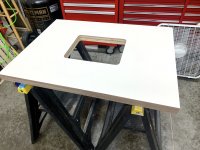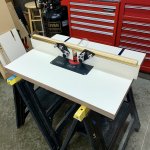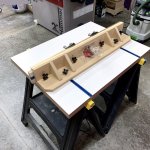I'd like to laminate a router table top with HPL, but I've never worked with it before. A few questions:
- Should I cut the hole for the router lift before or after laminating?
- I'm using plywood for the core (scraps I had on hand) and I'm going to edge-band with solid wood. Should I put the laminate over the edge banding or edge band last?
- Any concerns with routing some slots into the laminate for t-tracks?



